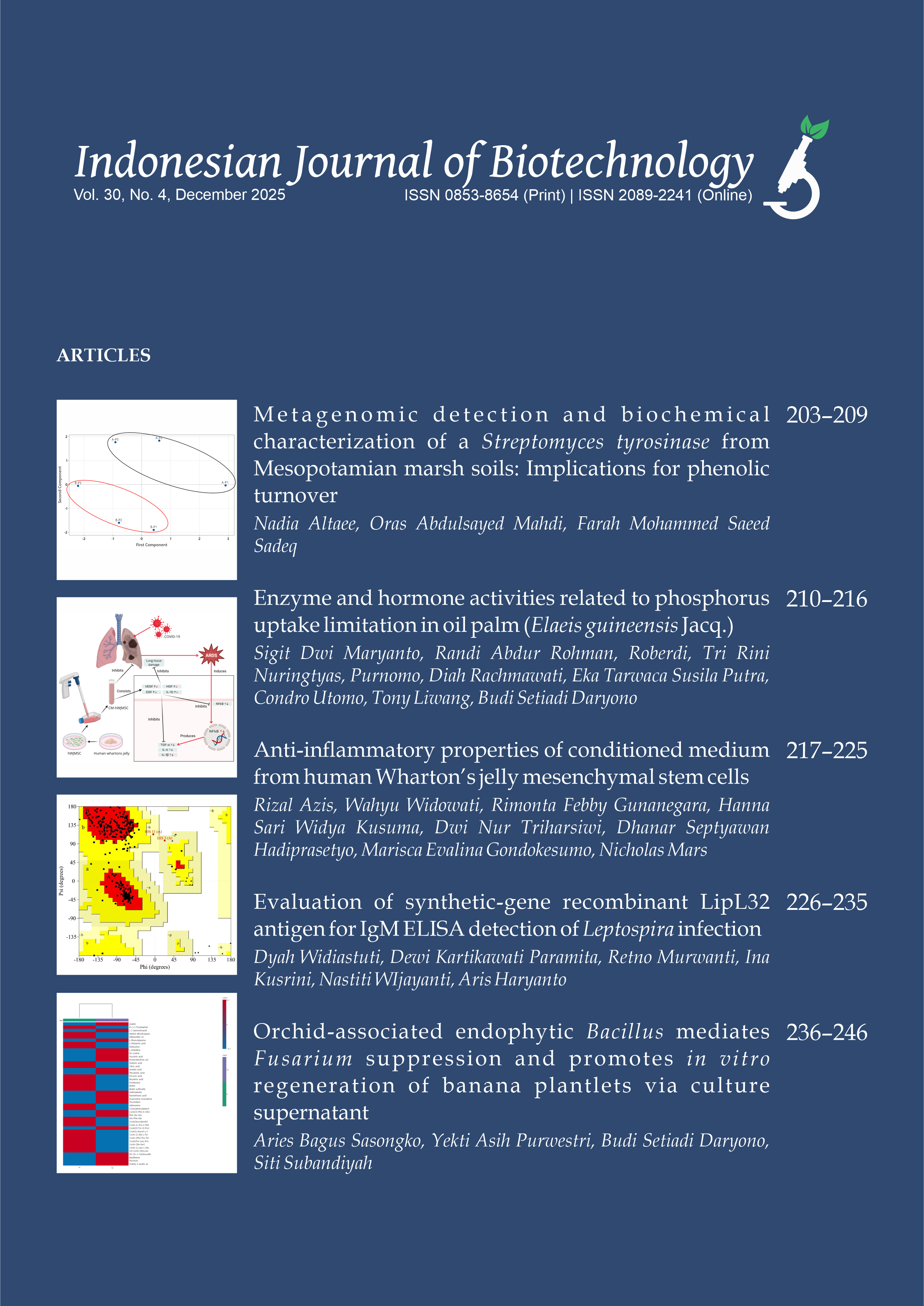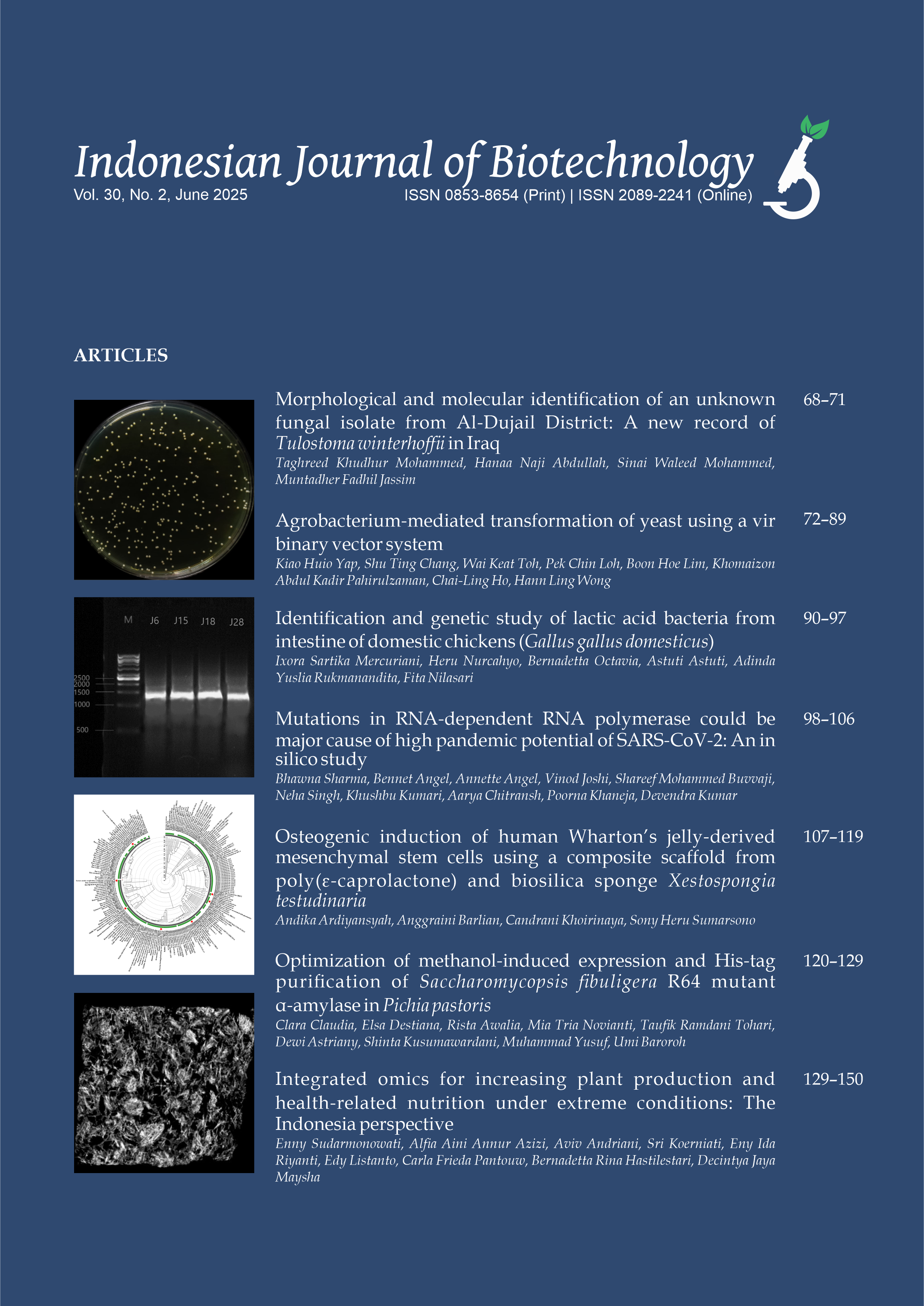The Application of Polymerase Chain Reaction – Restriction Fragment Polymorphisms (PCR-RFLP) to Determine Genetic Diversity of Madura Cattle in Sapudi Island
Tety Hartatik(1*), Slamet Diah Volkandari(2), S. Sumadi(3), W. Widodo(4)
(1) Faculty of Animal Science, Universitas Gadjah Mada, Yogyakarta
(2) Faculty of Animal Science, Universitas Gadjah Mada, Yogyakarta
(3) Faculty of Animal Science, Universitas Gadjah Mada, Yogyakarta
(4) Research Centre for Biotechnology, Universitas Gadjah Mada Faculty of Animal Science, Universitas Gadjah Mada, Yogyakarta
(*) Corresponding Author
Abstract
The aim of this study was to determine genetic diversity of Madura cattle using Polymerase Chain Reaction – Restriction Fragment Length Polymorphisms (PCR-RFLP) analysis of the cytochrome b (cytb) gene. Samples used for the experiments were blood of 43 cattle that consist of 15 cattle obtained from Madura Island, 23 cattle from Sapudi Island, and 5 Limousin-Madura (Limura) cattle. A fragment of 464 base pair of cytb gene was amplifi ed by forward primer L14735 and reverse primer H15149. The PCR product was digested with TaqIand HinfI restriction enzymes to identify genetic patterns. Data of PCR-RFLP showed two haplotypes, that were A and B, in cattle obtained from both Madura Island and Sapudi Island. The frequencies of haplotype A and B of cattle from Sapudi Island were 69.57% and 30.47%, respectively. More diverse frequencies were observed in cattle obtained from Madura Island, where haplotype A and B were 86.67% and 13.33%, respectively. In this experiment, Limura cattle had only haplotype A. As a conclusion, PCR-RFLP of the cytb gene had been able to determine a genetic diversity of Madura cattle. Key words: Genetic diversity, Madura cattle, haplotype.
Keywords
Genetic diversity; Madura cattle; Haplotype
Full Text:
PDFArticle Metrics
Refbacks
- There are currently no refbacks.
Copyright (c) 2015 Indonesian Journal of Biotechnology









